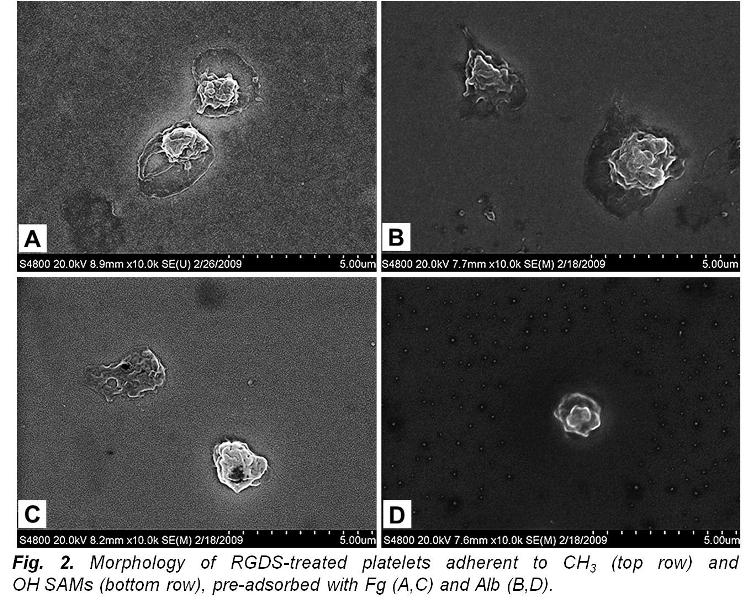Probing the Mechanisms of Platelet Adhesion to Adsorbed Plasma Proteins
Despite over three decades of research in blood-material interactions, the biomaterials field has been unsuccessful in developing a truly blood-compatible biomaterial. Although not clearly understood, it is widely recognized that blood compatibility is largely governed by adsorption-induced conformational changes of the plasma protein's soluble-state structure. These changes can lead to platelet adhesion, activation, and subsequent thrombus formation, which can result in many different adverse physiological responses including vascular occlusion, pulmonary embolism, organ failure, and stroke. This position is further supported by the simple fact that the same proteins that cause such adverse reactions when adsorbed on implant surfaces do not induce these same adverse responses when they are in their soluble-state condition in the blood before adsorption.

Platelet adhesion response is widely believed to be mediated by fibrinogen (Fg) and our group demonstrated that conformational shift in Fg is a more important determinant of the platelet adhesion than the actual amount of adsorbed Fg. Furthermore, in a radical shift to the conventional thinking that albumin (Alb) is inert to platelet adhesion, our group also demonstrated that beyond a critical level of adsorption-induced unfolding (~34% helix loss), Alb mediates the adhesion of platelets very similar to that of Fg. This response was found to be substantially mediated by interactions between RGD-specific platelet receptors and arginine residues in the adsorbed proteins. Overall, our results suggest that platelet adhesion to adsorbed fibrinogen, and possibly many other adsorbed proteins, involves mechanisms that may be quite different than currently understood. Thus, there is still much to learn about the molecular mechanisms that mediate the interactions of platelets with adsorbed proteins and how to control these interactions to improve the blood compatibility of biomaterials used in vascular and cardiovascular applications.

